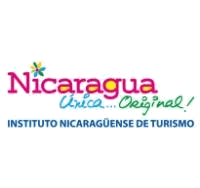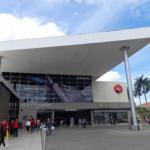Hoja de Ruta de la Temporada de Lluvias 2025: Cómo disfrutar Nicaragua de junio a noviembre
I used to dread June. My first year in Managua a tropical downpour turned the main road into a river and I missed my bus. Fifteen rainy seasons later, I know exactly how to keep adventures rolling – puddles and all. This guide pulls together those hard-earned lessons so you can enjoy Nicaragua’s “green season” with confidence.
Weather Snapshot 2025: What to Expect
Nicaragua has two main seasons. The wet season runs from May to November, with the heaviest rain in October.
- Pacific lowlands (where Managua is located): Expect late-afternoon thunderstorms and total monthly rainfall of 100 – 200 mm in May according to the national meteorological service, INETER.
- Central highlands: Cooler air and steady showers that keep coffee country lush.
- Caribbean coast: The wettest region with occasional multi-day deluges and potential tropical systems.
Consejo: Build a buffer day into any Caribbean-coast itinerary in case regional flights are grounded by storms.

Region-by-Region Breakdown
Pacific & Colonial Cities (Managua, León, Granada)
Sunrise is often bright, with a quick temperature climb to 30 °C before clouds stack by mid-afternoon. Roads usually drain in a few hours, so day-trips still run on schedule.
Central Highlands (Matagalpa, Jinotega)
The highlands sit 5 – 8 °C cooler than Managua. Intermittent mist keeps coffee cherries swelling – perfect for farm tours from September onward.
Caribbean Coast & Corn Islands
Here rain is more persistent and humidity hits 90 percent. Build in slack time for flight delays, and pack sealed dry bags for electronics.
Transport Realities in the Wet Season
- Roads: Expect potholes and the odd flash-flooded bridge on the Masaya highway. Leave early to allow for delays.
- Buses: Micro-buses between Managua and Granada may run 10 – 30 minutes late after heavy afternoon cloudbursts.
- Domestic flights: La Costeña cancels or reschedules if cloud ceilings drop below minimums – check the night before.
- Private shuttles vs. public: See fare table below.
| Route | Public bus (C$) | Shuttle (US $) | Private car (US $) |
|---|---|---|---|
| Managua → Granada | 38 córdobas (≈ US $1) | 15 | 45 |
| Managua → León | 50 córdobas | 18 | 55 |
| Managua → San Juan del Sur | 110 córdobas | 25 | 90 |
Wet-Season Packing List & Gear Cheat-Sheet
| Must-bring | Why |
|---|---|
| Lightweight rain jacket (10 000 mm+) | Breathable but keeps you dry in tropical squalls |
| Dry bags or heavy zip-locks | Phone and passport protection during boat rides |
| Quick-dry shoes or sandals | Mud and puddles are everywhere |
| 20 % DEET or picaridin repellent | Dengue risk climbs April – November :contentReference[oaicite:2]{index=2} |
| Headlamp with red mode | Evenings often see power flickers during storms |
Top Rainy-Season Experiences
- Surf Pacific swells – consistent waves between June and September keep breaks like Popoyo pumping.
- Volcano boarding on Cerro Negro – damp ash compacts into a faster, safer slide.
- Coffee cherry tours – September to November harvest in Matagalpa; watch pickers at work and taste fresh honey-process beans.
- Emerald-green landscapes for photography – rolling hills pop after a storm. Carry a microfiber cloth for your lens.
- Hot springs & mud baths – soak near Masaya on cooler nights.
Health & Safety Checklist
- Sign up for weather alerts from INETER or your embassy.
- Dengue prevention – cover up and reapply repellent every four hours.
- Filtered drinking water – heavy rain can stir sediment into municipal supply.
- Travel insurance reminder – we recommend Ekta Travel Insurance (affiliate) for evacuation cover.
- Lightning protocol – get off lake beaches when skies darken; storms build fast.
Budget Hacks – Rainy-Season Deals
Hotel occupancy across the Pacific lowlands dips 10 – 25 percent from June to November, so you can often negotiate upgrades or nightly discounts at check-in.
| Daily Style | Typical Spend (US $) |
|---|---|
| Backpacker | 45 |
| Comfort-seeking couple | 90 |
| Surf-focused digital nomad | 70 |
Quick FAQ
Click a question to jump to the answer.
Is it safe to rent a car in the rainy season?
Yes, if you book a high-clearance SUV and avoid driving after dark. Expect potholes and sudden washouts on rural roads.
Will the ferry to Ometepe still run?
Most sailings operate, but strong winds occasionally shut down the service. Confirm 24 hours ahead by phone or WhatsApp.
When is the rain worst?
Statistically, mid-October records the highest rainfall totals according to INETER data. :contentReference[oaicite:4]{index=4}
Where to Stay
Posada Managua – Our central, storm-proof base with 24-hour reception and private transport on standby.
Casa del Agua, Granada – Colonial guesthouse with airy courtyards.
Hotel El Convento, León – Historic charm plus solid backup power if storms cut electricity.
Conclusion
The rainy season paints Nicaragua in deep greens, cools the evenings, and keeps crowds light. With the right gear, flexible transport plans, and these insider tips, you will discover wild surf, fragrant coffee harvests, and bargain rates that dry-season visitors never see. Have a great trip – and if you need a ride or a room in Managua, reach out here. I would love to hear your rainy-season stories in the comments.

Hola, soy Michael, propietario de Posada Managua, que ha considerado a Nicaragua su hogar durante los últimos 16 años. En 2009, abrí Posada de mochileros de Managua, un albergue para mochileros de 53 camas. Ahora he cambiado un poco las cosas abriendo Posada Managua en 2024.
Antes de dedicarme a la hostelería, pasé 13 años en finanzas, análisis de negocios y gestión de proyectos, habilidades que ahora aplico al marketing digital basado en datos y al contenido que nos ayuda a competir con las grandes agencias de viajes online (OTA). He reservado más de 40.000 noches; he probado casi todas las rutas de autobús entre Managua y el Caribe y he aprendido valiosas ideas de los huéspedes a los que he ayudado a lo largo de los años.
Cuando no estoy limpiando la piscina o respondiendo a los comentarios de los huéspedes, me encontrarás buscando la siguiente mejor cafetería aquí en Managua (pista: hasta ahora, ¡el café en la gasolinera Puma es bastante bueno!)
Mi misión: compartir consejos honestos y de primera mano para que puedas experimentar Nicaragua como un local experimentado.


